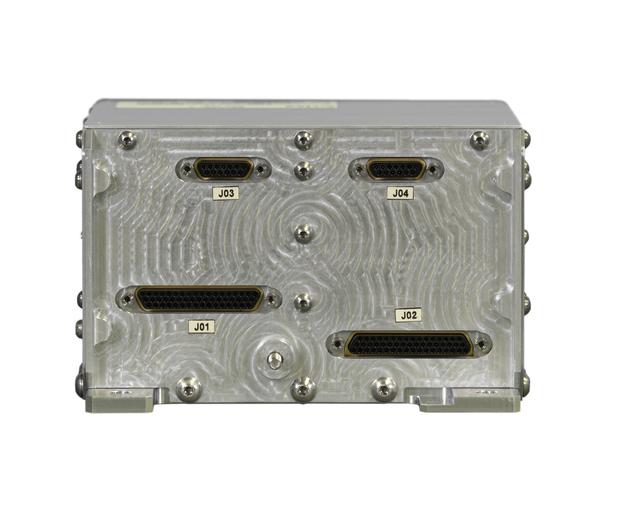Supplying core capabilities to our customers
Data processing and control have been core capabilities at Airbus Crisa since its inception 40 years ago.
The most important and demanding missions of the European Space Agency count on the reliability and performance of data processing and control electronic units produced by Airbus Crisa.
Expanding from its development of fully customized equipment, Airbus Crisa’s product policy is increasingly focused on standardization, with the objective of maximizing reuse and reducing the development cycle.


On-board computers
Data handling
On-board computers are the brains of spacecraft. Airbus Crisa has developed on-board computers and spacecraft management units for numerous space exploration programmes, as well as on-board computers that are tailored for Earth observation satellites – based on LEON3 processors.
Together with these on-board computers, Airbus Crisa provides bootstrap and hardware-dependent software to facilitate the development of mission-application software.
Image: On-board Computer - Exomars Descent Module


Instrument control
Payload processing
Instrument controllers are one of Airbus Crisa’s traditional product lines, providing turn-key end-to-end solutions that include the full development of hardware, as well as software.
The instrument controllers serve as the interface between the spacecraft platform and its instruments, removing the user from payload complexities. By taking charge of acquiring and processing science data, the units from Airbus Crisa can handle a full range of interfaces.
Airbus Crisa’s instrument controllers cover a diverse range of duties, including mechanism control, thermal control, and the management of scatterometers and radars. The company’s expertise is applied to the most demanding instruments in Earth observation, space science and exploration.
Image: Digital Control Unit - MetOP SG Scatterometer


Video electronics
Camera front-ends
Front-end electronics are a key element of the detection chain for Earth observation spacecraft and instruments on astronomical observatories.
For more than 20 years, Airbus Crisa has provided state-of-the-art, front-end electronic products that respond to the most demanding performance requirements while offering cost- effective solutions that are tailored to customers’ needs.
With products adapted to the main detector technologies (CCD, CMOS and photodetectors) and breakthroughs such as Europe’s first 16-bit analog-to-digital FEE for spaceflight (on the Gaia spacecraft’s Proximity Electronics Modules), Airbus Crisa has earned its position as the European’s leading company in this sector.
Image: Front End Electronics - Sentinel 5 UVN


Active antenna electronics
Multifunctional communications
Airbus Crisa has pioneered active antenna technologies for more than a decade.
The company’s high performance – and space proven – advanced digital antenna control electronics provide beam configuration, beam-hopping, synchronization, automatic failure detection and isolation.
Airbus Crisa’s capabilities have been demonstrated with the multibeam active antennas on Eutelsat’s Quantum commercial telecom relay platform, as well as the large active antennas that incorporate in-orbit reconfiguration capabilities on the Spainsat governmental communications satellite.
Geo-location functionalities performed directly at RF frequencies require on-board high speed signal processing employing state-of-the art front-end conversion technology.
Image: Active Antenna Control Electronics - Spainsat NG


Remote Interface/Terminal Units
Platform management
The main functions of Airbus Crisa’s Remote Interface Units and Remote Terminal Units (RIUs/RTUs) are the electrical management of satellite propulsion and AOCS (attitude and orbit control systems), along with the generation of housekeeping data.
These units have demonstrated outstanding in-flight reliability and excellent operational lifetimes, backed by Airbus Crisa’s capability to produce them at rates that meet customers’ satellite production schedules. Among the spacecraft to benefit from the company’s RIUs and RTUs are Airbus-built Earth observation satellites and European Space Agency science missions.
Airbus Crisa’s AS250 Remote Interface Units have accumulated combined in-orbit operations totalling more than 55 years without reported failures.
Image: Remote Interface Unit - Astrosat 1000 platform
